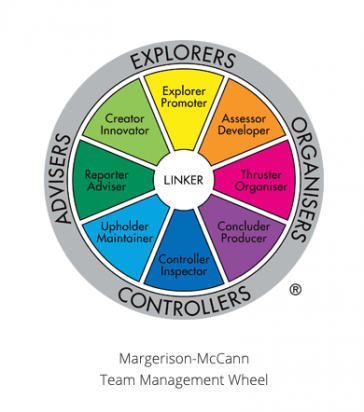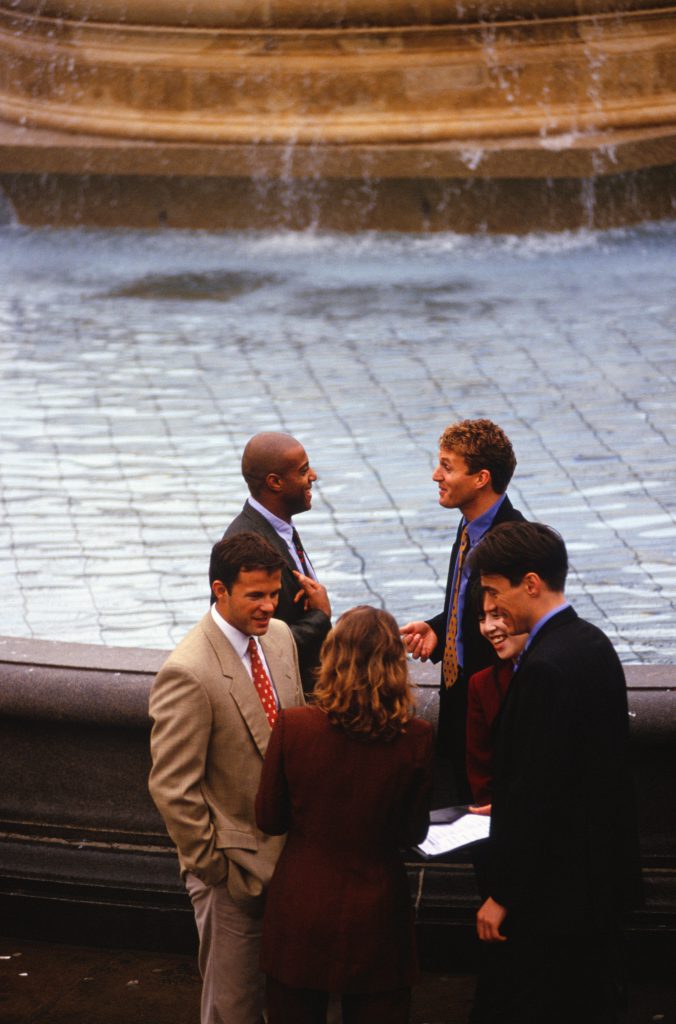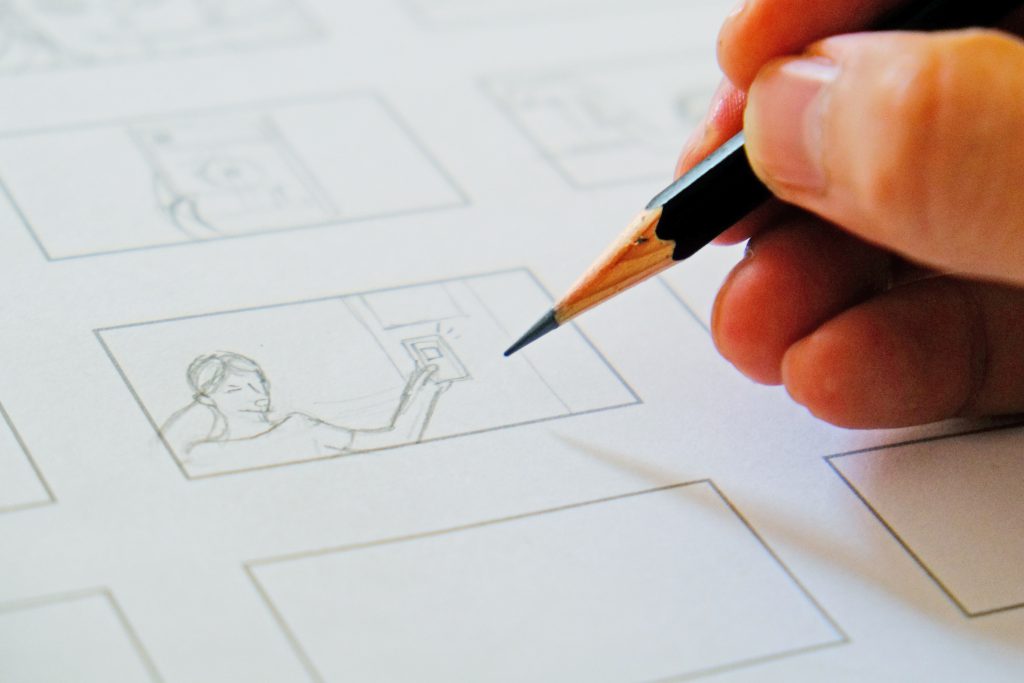Posted in Blog, Grow, Influencing people, Lead Your Team by Jo North
Facilitation and dysfunctional teams
One of the members of my facebook group for workshop facilitators asked for facilitation advice for rebuilding a dysfunctional team, and I wanted to share these tools and approaches with you, too. I hope they help you and would love to hear how you get on with them.
I start by exploring what dysfunction in teams means, why teams might be broken, and then move on to the theme of trust.
I also share a suggested agenda that you can use, adapt or tweak in your own sessions.
It’s great to meet you
For those of you who haven’t met me, I am Jo North and I love facilitating.
I facilitate for thousands of people every year, I facilitate all over the world, and I also help facilitators to learn how to facilitate more effectively as well, expanding their creativity, confidence and impact.
Sensitivity and courage
Teams can be broken for a whole number of reasons, of course. Your facilitation needs to be infused with great sensitivity and courage. As facilitator, it’s important that you dial up your emotional intelligence, really listen deeply, and go into the facilitation as ’emotionally clean’ as you can. This means making sure that any negativity or emotions you may have are out of the way. You are there ready to listen in, and serve the people you have got in the room.
As a facilitator, you’ll already be a great listener. And with dysfunctional teams that need more support, you’ll need to listen more actively than ever. Have a look at my in-depth guide here for advanced listening skills for facilitators.
Reality check
I’d also say that a day or two of awesome, skilled facilitation is likely to make a big difference to the team, but sometimes the issues are so deep that it will take much more than that.
So, what I am suggesting here really is a starter for ten. It’s about getting going and starting the conversation on a constructive footing, and making some progress, rather than getting everything sorted all in one go.
I suggest if possible, if the budget, people’s home and work life allow it, that you book your workshop off site, and get away overnight, so that team members can share dinner, relax in the evening together, and actually talk to each other outside the formal facilitated session. Even if you can go from lunchtime on one day to lunchtime the next, then that overnight really does help.
Lencioni’s team dysfunctions and trust
If a team is dysfunctional, it may still get things done, but of course it won’t be as good as it could be. It won’t achieve all that it could achieve. It won’t fulfil its potential.
Lencioni’s work on team dysfunction shows that trust is the very foundation of high performance team work. If teams don’t have trust in each other, the people in the team won’t be confident enough to share ideas, to challenge, to have healthy debate and constructive disagreement, because they will be concerned about how they will be perceived. They’re unsure about what others might do, or how they might consider them. The risk that concerns them is that speaking up could lead to them being treated or seen differently.
Without trust there is a fear of conflict.
Avoidance of conflict leads to a lack of commitment, because people haven’t had their say and don’t have a direct stake in the decision-making. This in turn leads to a lack of full accountability, which ultimately negatively impacts team performance and overall results.
When you’re working with a broken team, trust is even more critical to your facilitation approach.
Understanding team dynamics
Before I get into a suggested agenda, you might want to consider using the tools such as TMSDI’s Team Management Profile. It is a highly valid and reliable psychometric tool that helps people understand their preferred roles within teams at work with an exceptional degree of depth,
Delegates benefit from a highly personalised, detailed report about their preferences and their impacts on others. You can see the Margerison-McCann Team Management Wheel in the image below.
The individual results are also combined to create a full team profile, which shows everybody’s preferences together.

I am licensed to use Team Management Profile and have done so on many occasions in different parts of the world. It always generates fantastic conversations, and a really improved understanding from people, getting them tuned in to where their colleagues are coming from and why they are doing what they are doing. With that increased understanding, delegates can begin to rebuild the team together.
There are many other great psychometric tools, of course. The Team Management Profile is my favourite, because I have had some fantastic results with it. It helps the delegates understand how they relate to other people, how they make decisions, how they structure their time, what they prefer to spend their time doing, and how those things and more drive behaviour.
Facilitation agenda
Right, let’s get started on the agenda, first thinking about the introduction.
Opening your session
Always take time to plan and think about your session opener, especially when you are working with teams that need some additional support.
How you set the tone and the scene will be really important. I find that it’s really effective to focus on where the team wants to be, what high performance looks and feels like, what being a great team is really all about. Work on getting there rather than necessarily dwelling too much on what is wrong, particularly. You can address that a bit later on.
Agree and write down some house rules, including items such as:
- Anything that is said in the room stays in the room. You will reinforce that nothing should be discussed outside of the room unless the whole group agrees.
- Be open, there is no judgement. There is an underlying assumption that everything will be said with positive intent and received that way.
- There is openness and honesty, and everybody speaks with respect, and treats each other respectfully.

When you’re doing your introduction, it’s important that you flag that being a high performing team is also about well-being, it’s about relationships. It is not just about doing and achieving. It is about people feeling that this is an amazing place to come to work. These are amazing people to work with, and they can all do amazing things together.
After the introduction, objectives, warm up and ground rules, it’s time to get into creating a shared team vision.
Facilitation for a shared team vision
Using metaphor is a surprisingly simple yet effective technique for helping the team to create their vision.
A metaphor is an object, or something else is removed from the matter in question that also describes it, creating a shift in perspective.
For example, if I say, ‘I am a busy bee’, then ‘busy bee’ is the metaphor. It creates a picture and sense of what I am like.
We use metaphor a lot. It is all around us, and I wonder if we always notice it as much as we could. There are films that are based entirely on metaphor, such as The Matrix . It is a really helpful technique to use because it puts a little bit of distance between the challenge that people are working on and themselves. It creates some safe space for people to open up and discuss things. Safe space is really important.

The aim at this stage if for delegates to define what great looks like, before they get into where they are now, and all the issues they’re experiencing.
Ask your delegates to collaborate in small groups to think of and draw a metaphor poster that represents their vision for how they want to be, as a high-performing team.
The drawing is important because it usually surprises the delegates, activates different parts of the brain and gets them talking together, using their imaginations and collaboratively problem-solving on how to express their ideas through a drawing. The activity means that they need to have discussions around what great looks like, what a metaphor could be that represents what great looks like.
When they have done that, ask them to stick that on the wall, and then move on straightaway – with no plenary feedback or discussion about what they have just done – to doing exactly the same activity, but this time drawing a metaphor poster for how they see the team right now.
What metaphor represents where we are right now?
This second metaphor is something that really represents how they feel about working in that particular team and the relationships inside the team.
Again, there will be problem solving, the drawing, they use different parts of their minds. They are needing to have conversations about what a good metaphor would be and why, and opening up conversations around how they see things and what life is like being in that team right now.
Why are we here?
The groups now have a metaphor for where they want to be, and a metaphor for where things are now.
The next step is to ask delegates to work individually this time, to write down on sticky notes the reasons why they think the team is how it is. Ask delegates to write to just one thing per sticky note, but they can use as many sticky notes as they like.
I like to play some carefully chosen, lyric-free music quietly in the background while they do this to take any edge off the quietness whilst the delegates think and write.

Setting the activity up in this way is really important because it gives people some space to think about how they want to write and communicate what it is they have got in their minds about the team performance.
Also it means there is input from everybody, you are not just getting one or two perspectives, or a couple of points of view that are louder than the others.
Now facilitate everyone in plenary, if the group isn’t too large. Ask delegates to put all their sticky notes on the wall, ‘clustering’ them with other sticky notes with similar themes from their colleagues.
Self-awareness and team profile
At this stage you have got a metaphor for where the team wants to be, a metaphor for where they are now, and some understanding why the team are where they are now. If you have prepared any profiling such as a TMSDI Team activity then this might be a nice time to get into the results, and show what they say, because this can enhance the work you have just done. Delegates will not only understand their own profiles, but also the profiles of the people around them, and the impact that is having on the group dynamic. Through that self-awareness they can then grow, and do a better job of their team working as well. (Just as an aside, I make sure every individual sees and has has time to digest their own profile, including a one-to-one session with me, before any group work and before the team overview is introduced).
Facilitation using models and frameworks
Next I would either use pre-prepared flipcharts, visuals, or maybe a couple of powerpoint slides to share the ideas and principles of Lencioni’s pyramid with the trust at the bottom, conflict, commitment, accountability, and results.
I would also share the trust equation and facilitate a conversation around the the models in the context of the delegates’ own situation and what they have written on the sticky notes.
Trust in business relationships depends on credibility, reliability and intimacy or openness, and that is all significantly impacted by the perception of self-orientation, or self-interest.
For people to trust each other in business relationships and teams, they have got to know that they have a sense of credibility, they need to know that people are able to do their jobs, they have got to be experienced, have the right level of expertise and so on.
Secondly the reliability, that people show up, they are there when times are tough, they do what they say they are going to do. They follow through on commitments, they can be counted on.
The third thing, which is intimacy or openness, is that people are authentic, they are themselves, they are who they say they are , their behaviour is consistent with their actions, and also that there is a level of self-interest that is matched by interest in doing what is best for others as well.
If people perceive that somebody is out only for their own self-interest, then that can ruin the whole trust relationship. It is really important.
It is really powerful to walk delegates through the trust equation and get them to think about how they are behaving as a team – i.e. where there are strengths in the trust equation, but also what can be done in the areas that aren’t so strong, to really build on that, and share that.
Facilitation of better mutual understanding
What I would then do is mix it up a little bit, with some speed dating in pairs.
Ask delegates to randomly pair up and give them one question to discuss in their pairs, which is to complete the following statement in conversation with their partner:
“The one thing that I wish you knew about me is that …. “
Give everybody long enough to have a really good conversation, but not so long that the conversation drifts into other things and they run out of things to say, and it feels a bit too uncomfortable. Sometimes this means just listening, watching and using your judgement as a facilitator. Keep rotating the pairs so delegates have the opportunity to speak with as many of their colleagues as possible.

Then, once all the conversations are completed, ask delegates to think individually about they have learned from doing that activity and write it on one sticky note, and attach it to the flipchart. You will find that there is some compelling and really interesting feedback, and you can have a conversation about that with the group.
Depersonalise feedback
So far you have thought about where the team wants to be, you have thought about where they are now, explored a bit why that might be, opened up the theme of trust, and about team working.
You might also want to do some work on the importance of depersonalising constructive feedback – when giving and receiving it.
I also would recommend a mini session on perspectives and empathy. I use the analogy of the dice in my facilitation of this. Opposite sides add up to 7.

If I am looking at 5, the person opposite me – on the other side of the dice – is looking at 2. Neither of us is right or wrong, we are just seeing things from a different angle, and actually neither of us has got the full picture. It’s important for every one of us to make the effort to walk round to the other person’s side of the dice, see what they are seeing. We don’t have to agree, but really getting that understanding of what people are seeing and where they are coming from helps us to understand, communicate and collaborate better.
Finally, it can be very powerful to facilitate a conversation about how we, as ordinary human beings, are all the heroes of our own story. We are in the middle of our own drama, justifying what we do, rationalising our experiences. Other people are the heroes of their own stories too. What we need to do is to create a shared story, where we are all heroes in it together.
Dialling down the emotion
Depersonalising feedback also has the benefit of minimising emotional triggers and responses, helping people to listen to each other and communicate more clearly. If you’d like to explore this theme in more detail, have a look at my article here: The elephant and the rider. How humans make decisions. It shares evidence-based insight on emotions at work.
Facilitation of idea generation
By now you have explored the issues, you have talked about mutual understanding, you have explored trust.
It may have all go a bit heavy. Just the right time to put a random stimulus activity into your facilitation!
I send people outside in pairs or small groups, as long as the weather is OK, to find one random thing between them that is of interest to them.
Still in their small groups or pairs, delegates are then asked to write down fifteen interesting words that describe the object.
Next I challenge them to turn those 15 words into a sentence on the theme of the day.
For example: I’ve sent delegates outside and they have brought in a traffic cone, which seems to be very popular choice in many workshops! Delegates write 15 words down about the traffic cone – conical, fluorescent, dirty and so on…and then turn those 15 words into a sentence about how they could become a better team, using every single word.
We all have a laugh actually, it is really funny, and it is a really nice way of getting people smiling, and bringing them together. That is so important when you are facilitating broken teams especially, but also when you are working with any team.
Other activities you can use are storyboarding activities, asking delegates to ‘storyboard’ how they get to the current metaphor to the new metaphor.
For the storyboard get some flip chart paper, and draw in 6 or 9 squares. The first square is the beginning, where the team is now, and delegates draw a picture of that. The last square is the metaphor where the team wants to be, and the squares in between are all the different things that they think they need to do them to get from one end to the other, in the right order.

Another nice facilitation activity is to create a team charter. Delegates can do this with pictures, with words, whatever, that you want to do with cutting out from magazines, headlines, or just writing. The team charter is where the group agrees what are their strengths, what are their weaknesses, what do they stand for, what is their mission and purpose and values? If they are part of a bigger organisation that needs to align of course, but they can have their own version of how the corporate version cascades into their own work.
The team charter will also include how the team is going to celebrate together, and some guidelines or operating principles around how they are going to communicate with each other, how they are going to disagree, how they are going to share information, how they are going to support each other. Creating a team charter is a super thing to do, and you can provide a giant canvas or substantial background so they can take it back with them to remind them of their commitments and how your facilitation helped them to move forward.
For more tips and suggestions on getting ideas flowing in your team meeting, click here.
End with a clear plan, and on a high
Make sure you end with an action plan and on a high, so that everybody has had time to speak, time to think things through and move things on, and most importantly, clarity about and confidence in what happens next.
And finally…
If you’ve found some value in this article, and are interested in expanding your creativity, confidence and impact as a facilitator, then please do come and join me inside my free, private Facebook group, Idea Time for Workshop Facilitators. We all love facilitation, cheer each other on and share ideas. We’d love you to join us.
Thank you, and bye for now. Jo


